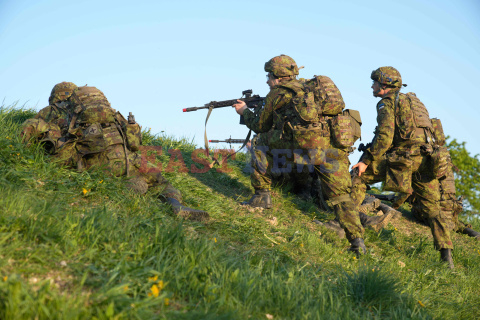Lithuania and Estonia have committed to raising their defense spending to over 5% of GDP, becoming the first NATO members to reach this threshold, according to the Financial Times.
The move comes in response to pressure from US President Donald Trump and growing security concerns in the region, as the Baltic states are bordering Russia. At the Davos Forum on 23 January, Trump has reiterated calls for NATO allies to substantially increase their defense budgets, advocating for a target of 5% of GDP, which is significantly higher than the current NATO guideline of 2%.
Lithuania’s foreign minister Kęstutis Budrys told the Financial Times that his country would allocate between 5 and 6% of GDP to defense from 2025 through 2030, doubling its current spending.
“Of course, there’s pressure, and it’s good and constructive pressure from our strategic and biggest ally in Nato [the US]. We cannot ignore those messages. But it’s not the sole reason . . . It is existential for us to have real war-fighting capabilities here,” Budrys said.
Estonian Prime Minister Kristen Michal followed suit, announcing his country would match the 5 percent target, up from its current 3.7 percent.
“Our key security partner, under its new president, has sent a clear message: NATO defence spending must increase,” Michal stated.
According to European officials cited by the Financial Times, NATO plans to raise its informal spending target from 2 percent to between 3 and 3.5 percent at its June summit.
While 23 of NATO’s 32 members met the current 2 percent target last year, some major European allies, including Spain, Italy, and Belgium, spent less than 1.5 percent in 2024.
Lithuania plans to finance the increase through government borrowing and potential European financial instruments, while Estonia indicates it will implement public sector cuts.
However, the opposition politicians in Vilnius question the feasibility of such spending levels, with one stating that “borrowing that amount would mean rewriting the social contract.”
Romania, which shares the EU’s longest border with Ukraine, is maintaining its defense spending at 2 percent of GDP despite significant budget constraints, including the EU’s highest deficit at 8.6 percent of GDP. The country has committed to major defense investments, including €6 billion for F-35 fighter jets and €1 billion for Patriot air defense systems.
Russia allocates approximately 29% of its public expenditures to defense, significantly surpassing the NATO average of 4.3%, which includes the United States’ 11% contribution. This substantial investment reflects Russia’s transition to a war economy, enabling increased production of military equipment such as tanks and drones
NATO Secretary General Mark Rutte announced that Ukraine plans to allocate approximately 25% of its GDP to defense by 2025, a figure significantly higher than the average defense spending of European NATO members.
He emphasized that investing in defense now is crucial to prevent much higher costs in potential future conflicts. Rutte also highlighted that during the Cold War, European governments spent over 3% of their GDP on defense, but this declined after the fall of the Iron Curtain.
Related:
- NATO Secretary General: Ukraine to spend 25% of its GDP on defense by 2025, ten times NATO’s average
- Putin approves 2025 budget with massive defense spending, potentially cutting social programs
- ISW: Russian officials emphasize social spending but increase 2025 defense budget to $ 140 billion
- Polish president says NATO must urgently ramp up defense spending
- Business Insider: German intel predicts potential Russian attack on NATO from 2026 onwards
- AP: Baltics have 3 or 4 years to prepare for Russian ‘test’ of NATO, Estonia FM says
- Estonia: Russia preparing for military confrontation with West
- BILD: NATO plans the largest exercise since Cold War, involving 90,000 soldiers, to deter Russia
- Russia’s war: an attack on Europe


